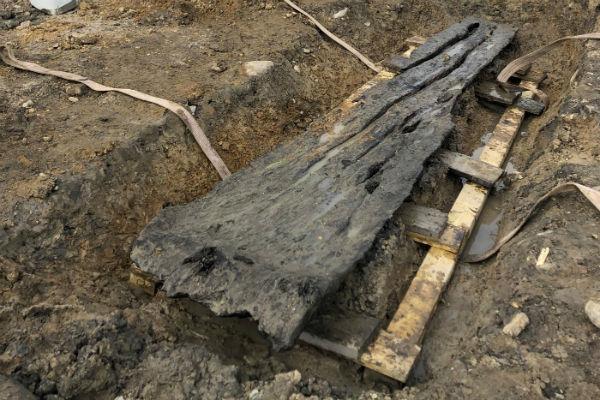Archaeological work on a North Wales bypass has revealed a large burnt mound around 3500 years old with 3 troughs beneath, one possibly being a dug-out canoe which could be a substantial discovery.
The unearthing of a trough measuring around 3 metres could be significant.
During excavation it became apparent that a large section of timber was preserved within the trough, and could date back to at least 1500BC.
This was found to be the trunk of a single oak tree which had been hollowed out, with archaeologists believing it likely to be a canoe which was re-used as a trough, although it is possible it was always intended for that function.
If the well preserved timber is a canoe, it is an extremely rare discovery and the first prehistoric example to be found in North West Wales.
The object has now been lifted and is currently being assessed further by specialists.
A section of Roman road has also been excavated. The route was identified on the geophysical survey and could be seen as a low bank running through a number of fields before excavation began.
The scheme has allowed the investigation of a much longer stretch of the road and has confirmed the route of the road between the forts of Segontium (Caernarfon) and Canovium (Caerhun, Conwy Valley), which was previously uncertain.
An early medieval industrial site which dates to the 8th century has been uncovered as well. Although no traces of metal were found during the excavation, samples collected during an earlier phase of work contained fragments of iron known as hammerscale which are hot sparks that are produced when hot iron is struck by a hammer.
Welsh Transport Minister Ken Skates said:
The archaeological findings are another huge positive to come from this development and provide an exciting and thought-provoking insight into the region’s ancient history.
These important discoveries may never have been found without the construction of the bypass and I’d like to thank the team of archaeologists, contractors and all those involved in unearthing these remarkable findings.







